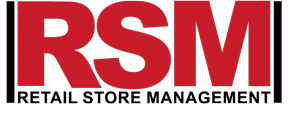
Introduction
“Marketers need to build digital relationships and reputation before closing a sale” – Chris Brogan, CEO, Owner Media Group
Retail industry disruptors are increasing the pace at which they incorporate technologies in their day-to-day business management processes. Technology is increasingly becoming a game-changer in the effectiveness, efficiency, and the profitability of modern retail businesses. Retail transactions generate an inordinate amount of both structured and unstructured data. Technology adoption must begin to
drive how you mine customer data and deliver value to your customers in exchange for their patronage. Technology cannot solve all the competitive challenges you face but it has the capacity to deliver a competitive punch when properly sourced and creatively applied in most facets of your retail value chain. From supplier sourcing and vetting, to inventory management, extending to most aspects of your value creation chain, to how you sell and whom you sell to. Let us examine a number of applications that have the capacity to deliver on our retail business goals and objectives:
Digitally Enabled Self-Checkout Counters:
If you are a time-constraint shopper, digital self-checkout counter is a source of positive customer experience for you. As a retail business owner or manager, self-checkout counters help you reduce your labour cost as one cashier can man between 5 to 10 self-checkout counters. For the customer, self-checkout is faster, with little or no lines in some store locations. Once a customer is familiar with its use, it reduces the hassles of using the technology. Also, your customer has control over whether to use it or not.
Web Enabled Omnichannel Retailing:
Smart brick-and-mortar retailers are transforming their websites from pure company information-providing sites to e-commerce sites. Offer your customers the option of browsing or shopping on your website by formatting it to an e-commerce-enabled site. Offer them the possibility of browsing at your website as an online buying preference, where they can place their orders, have the opportunity of home delivery or click-and-collect alternative at your physical stores. Smart brick-and-mortar retailers have been able to leverage the array of web-enabled big data collection technologies that avail them a massive glean into their total customer journey, including information about their consumer buying habits and behaviour, about other sites these customers visit, their purchase history, their demographics and psychographics. Armed with this data, you will be able to personize and automate the offers and promotions you provide your customers. Each time a customer makes a search or makes a purchase online, she leaves a trail of valuable information you can mined and refine into structured data to gain actionable decision-making competitive edge. If you cannot afford customized data analytics software, Google analytic, a free analytic software can provide an inundatal valuable data analytics business intelligence for your retail business, the same data mining advantage enjoyed by pure e-commerce operators.
The Use of Digital Sensors In-Store
To tailor your products and service offers to the needs of your customers, you will need accurate data in real time. Sensor network integrated connectivity architecture can be deployed to deliver in-store customer data. An integrated sensor network architecture is a group of several devices equipped with sensors so that these sensors can work collaboratively as a system. For modern application in your retail enterprise environment your goal should be to capture, measure and use customer data for business intelligence.
The customized deployment of integrated sensor network in retail store environment is rapidly transforming how modern retail management interacts and engages with customers. Retailers like Sainsbury, and Tesco in the UK, and Walmart in the US are examples of retail chains where an array in-store sensor-enabled integrated network technologies are deployed to enhance customer experience while proving valuable insight about the purchase habits of in-store customers. You can do the same in your independent retail store. As a smart retailer, sensor-abled self-checkout counters is no longer a nice-to-have device but a must-have aid in minimizing the annoyance of long queues at staff-manned checkout counters. Moderately priced and simple to use sensor-scanning devices are available for deployment, even if you are a single-store independent retailer. POS devices with barcode-reading integrated capable devices are also gaining traction at single-store independent retailers.
The Future-Shapecompany, a Munich based technology company is currently rolling out sensor-imbed, heat-emitting store floor carpets capable of mapping retail in-store customer paths, duel time and place, which is wirelessly transferred to and captured by customized computer software so retail management can accurately determine in-store customer journey and use same to tailor products selection and align same with targeted ads and promotions. The same technology can accurately determine the appropriate lighting and other store atmospherics like heating for enhanced customer experience and patronage. T-System, a German global IT services and consulting company, headquartered in Frankfurt has developed sensors that can accurately determine when a product is removed from a shelf and relay such information for immediate re-stocking in real time. Also, there are digital cameras integrated with facial recognition technologies capable of interpreting the facial expression of shoppers, thus enabling your retail store management to accurately determine the effectiveness of your customer satisfaction program.
Digital Sensor-Enable Video
Originally legacy analog video technology was deployed in retail stores as a means of dictating and managing loss prevention. They were often mounted on walls and store corners in a coordinated network. With modern sensor technology, smart digital video cameras now perform the same function with the added capability of capturing and measuring customer data for analytics purposes. Smart digital video cameras capture images and convert them into analytics data, which can be processed to gain actionable insights about customer in-store journey. The functionality of modern smart digital video technology includes precision traffic counting and tracking, measurement of customer dwell time, data provision for customer engagement, customer-demographics, and loss management capabilities. For independent retailers, smart digital video technology has a low cost of acquisition and deployment.
RFID Technology
Radio Frequency Identification (RFID) has been around for quite a while. Walmart was an early adopter of RFID technology for an end-to-end management of its value chain, from supply chain management, inventory management, in-store activity-tracking to retail sales management. RFID are usually embedded with unique identification codes, which allows for individual tagging of Stock Keeping Units (SKU’s). RFID readers could be fixed on your retail store ceilings and there are also various handheld mobile models for ease of mobility. Often, they are integrated with POS devices so you can tell with precision your inventory status along the entire value chain, from supply chain, to individual knowledge about the state of all SKU units stocked in your inventory. RFID analytics can tell the entire customer in-store journey and their buying habits.
Wi-Fi Sensor Technology
Smartphones emit intermittent wi-fi signals, whether or not they are turned on or off, and whether or not they are connected to your retail store’s wi-fi network. Emitted wi-fi signals or blips search for nearby internet connections. These blips have identification signatures or markers. Your retail store Internet wi-fi network can serve as a robust medium for customer data. It cannot individually identify each customer nor access their personal data, but it can tell who is a first-time visitor and who is a repeat visitor. It can tell when a visitor exits your store and returns later. It can tell the dwell time of your in-store visitors, and the store paths taken. It can be used for managing your loyalty program. It can be used as an on-site promotion communicator. With wi-fi networks, long-range lock-on to smartphone devices is an advantage as line of sight is not a constraint.
Bluetooth Low Energy (BLE) Sensor
Bluetooth Low Energy (or Blue LE) is a low-energy modification of the classic Bluetooth device. It has multiple applications in the healthcare, sports, fitness, and internet connectivity industry. It is also an integrate component of beacon technology. It has a wider range than smart video cameras but a narrower range than regular wi-fi access points. In retail store application, Bluetooth LE technology is used for proximity-base messaging, shopper path analysis, employee productivity analysis, and it has the advantage of been able to segregate your shopper activity from those of your staff. It is a relatively cheap technology that can perform similar task as that performed by Wi-Fi sensors deployed in a retail store.
Customer Relationship Management (CRM) technology
The primary purpose of a CRM software technology is to help you manage your retail business by seamlessly integrating retail operations, transaction analytics and team collaboration. In this respect, there three CRM modules that your choice of CRM technology must deliver seamlessly; namely,
- Operations management automation module.
- Analytics management automation module, and
- Collaborative management automation module.
- Operations Management Automation
This will include sales, marketing and service operations automation.
a. Sales automation: with sales automation, your goal is to standardize how you effectively manage existing customers, while seeking new ones. Your CRM sales module should include a standardized system for lead generation and sales funnel tracking, sales forecasting, sales promotion, and pro-forma sales invoice generation.
b. Marketing automation: your marketing automation module should include your approach for addressing the marketing mix. It should include how best to define your product assortment categories, the role you assign to each category, elements of your marketing strategy, the tactics you will or have deployed, your website design elements, purpose and metrics.
c. Service delivery automation: this module should incorporate elements to your Total Quality Management (TQM) program in service delivery. It should address how to handle your customer complaints, your purchase delivery, returns, Key Performance Indicators (KPIs) measurement parameters. The essence is to help you run a customer-centric retail business
2. Analytics Management: Data analytics is the central purpose of this CRM module. Your retail business operation generates an inordinate amount of data, both structured and unstructured. Data analytics is a management decision-making support system. Your CRM analytics module should have an end-to-end capacity to track, capture, analyze and structure data from every facet of your business activities. This will include sales, marketing, and operations.
3. Collaborative management: this is a strategic function and this module should afford you and your team from sales, marketing, operations and other support teams to collaborate seamlessly and share information in such a manner that silos are eliminated or minimized for effective customer service delivery. For instance, your sales team should possess the capacity to provide your marketing team with actionable customer feedbacks, which should in turn could be passed on to the operations team for remedial actions. The essence of a collaborative CRM is to enhance team work in a holistic manner for effective results in your retail business.
By being digitally engaged in your retail management, you should gain measurable competitive advantage over your retail business rivals. A number of digital management and marketing tools have been explained in this article. You do not have to embed all of them in your retail business in a go. Start will a well definition of your digital business and marketing strategy. Be crystal clear about your goals and employ digitization as a means of gaining competitive edge.



